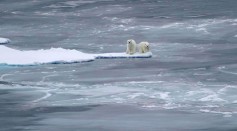environment
Last Male White Rhino in the World Under Heavy Guard
Scientists Digging Deep Into Dinosaur Killing Crater
The Miracle of Birth of the Ancient Mosasaurs
Tombs Filled with Mummies Discovered in Peru
Goldfish Invade Colorado Lake

Sun Experiences Seasons Just Like the Earth
Is the Brontosaurus Back After Nearly a Century?
Dwarf Dragons Discovered in the Andes
Glow in the Dark Tampons Could Shed Light on Water Pollution
Land Based Food May Not Be Enough to Save Polar Bears
Antibiotic Resistant Bacteria—Could Swimming This Spring Break Land You In the Hospital?
Bringing Extinct Animals Back to Life No Longer Just Part of the Movies

Keeping Global Warming At 2 Degrees Celsius May Not Be Enough
Climate Change And the Urban Heat Island in California's Central Valley
Most Popular

How Technology Is Changing the Real Estate Industry?

AI Revolution in Medical Education: Transforming How Healthcare Professionals Learn

Zombie Star Set to Light Up Night Sky: Blaze Star Could Erupt Soon

Exploring Life Beyond Earth: Study Claims Other Planets Could Be Suitable for Alien Life





